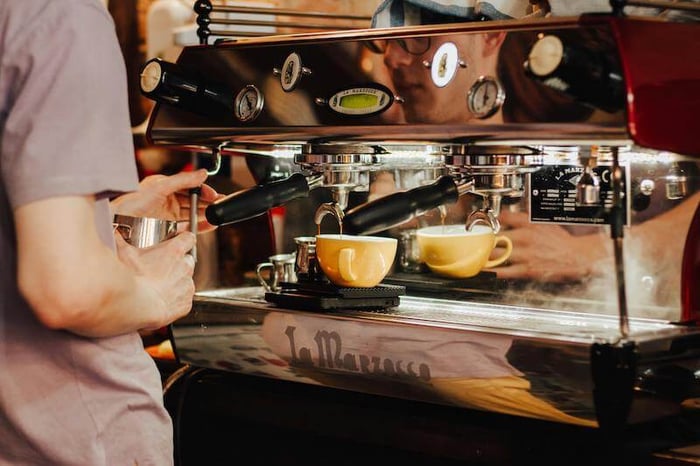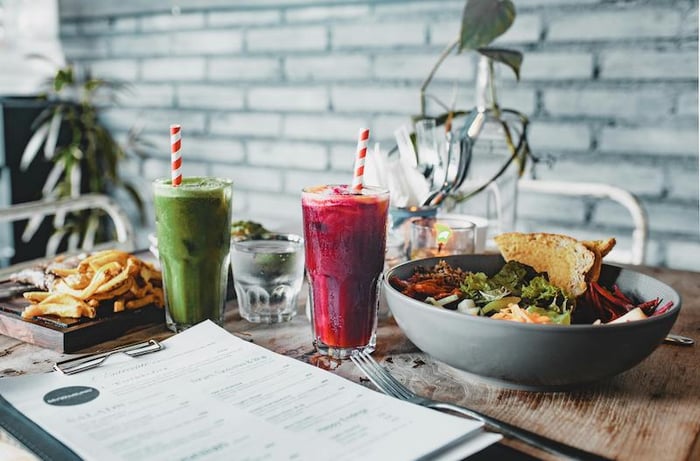
Boosting Customer Loyalty: Effective Loyalty Programs for Cafes
What's In This Post
In the highly competitive cafe industry, attracting new customers is essential, but retaining them is equally important. One of the most effective ways to ensure repeat business and foster customer loyalty is by implementing a well-designed loyalty program. An effective loyalty program can be a game-changer for cafes, transforming occasional visitors into regular patrons. These effective loyalty programs for cafes reward customers for their repeat business, creating a sense of appreciation and connection with your brand.
In this blog, we will explore various strategies for developing and managing effective loyalty programs for cafes that not only attract new customers but also retain existing ones.

Understanding the Importance of Loyalty Programs
Loyalty programs are designed to incentivise repeat business by offering rewards, discounts, or exclusive benefits to loyal customers. These programs can significantly increase customer retention, which is crucial for long-term success. According to research, increasing customer retention rates by just 5% can boost profits by 25% to 95% . Therefore, investing in an effective loyalty program is a smart move for any cafe owner.
Key Components of Effective Loyalty Programs for Cafes
1. Simple and Clear Structure
The first step in creating an effective loyalty program for cafes is to keep the structure simple and easy to understand. Customers should be able to quickly grasp how the program works and what benefits they will receive. Complex rules or unclear benefits can deter participation. Consider a straightforward points-based system where customers earn points for every purchase, which can then be redeemed for rewards.
2. Attractive Rewards
Offer rewards that are appealing to your customers. Common rewards include free drinks, discounts on future purchases, or exclusive access to special events. The key is to ensure the rewards are desirable and attainable without requiring an excessive number of visits. Tiered rewards can also be effective, offering increasingly valuable benefits as customers reach higher levels of loyalty.
3. Seamless Integration
Integrate your loyalty program with your point-of-sale (POS) system to ensure seamless tracking and redemption of rewards. Many modern POS systems offer built-in loyalty program features that make it easy to manage customer data and track purchases. Digital loyalty programs, such as those accessible via a mobile app, can also enhance convenience and engagement.
Strategies for Promoting Your Loyalty Program
1. Staff Training
Ensure your staff is well-trained and knowledgeable about the loyalty program. They should be able to explain the benefits to customers and encourage them to sign up. Enthusiastic and informed staff can significantly boost participation rates.
2. In-Store Promotion
Promote your loyalty program within your cafe through signage, table tents, and flyers. Highlight the benefits and simplicity of joining. Placing promotional materials near the checkout counter can be particularly effective, as customers may be more inclined to join while making a purchase.
3. Online Promotion
Leverage your online presence to promote your loyalty program. Use your website, social media channels, and email newsletters to inform customers about the program and its benefits. Consider offering a small incentive, such as bonus points or a discount, for customers who sign up online.
4. Personalised Communication
Use the data collected through your loyalty program to personalise your communication with customers. Send targeted emails or messages with special offers, birthday discounts, or reminders about their points balance. Personalisation can make customers feel valued and more connected to your cafe.
Examples of Successful Cafe Loyalty Programs
1. Starbucks Rewards
Starbucks is renowned for its highly successful loyalty program. Starbucks Rewards members earn stars for every purchase, which can be redeemed for free drinks and food items. The program also offers personalised offers, birthday rewards, and exclusive access to member-only events. Starbucks integrates its loyalty program seamlessly with its mobile app, enhancing convenience and engagement .
2. The Coffee Club VIP Program
The Coffee Club, a popular Australian cafe chain, offers a VIP program that provides members with a variety of benefits. Members receive a free coffee upon joining, as well as a free coffee every month. The program also includes discounts on food and beverages, as well as exclusive offers and promotions. The Coffee Club promotes its VIP program both in-store and online, ensuring that customers are aware of the benefits and how to join.
Tips for Managing Your Loyalty Program
1. Regular Evaluation
Continuously evaluate the performance of your loyalty program. Track key metrics such as enrolment rates, redemption rates, and customer feedback. Use this data to make informed adjustments and improvements.
2. Customer Feedback
Encourage customers to provide feedback on the loyalty program. Their insights can help you identify areas for improvement and ensure the program remains appealing and relevant.
3. Adapt and Innovate
Stay open to adapting and innovating your loyalty program based on customer preferences and industry trends. Introducing new rewards, updating program features, or incorporating technology advancements can keep your program fresh and engaging.
Effective loyalty programs for cafes are instrumental in boosting customer retention and fostering long-term relationships. By keeping the structure simple, offering attractive rewards, and promoting the program effectively, you can create a successful loyalty program that keeps customers coming back. Remember to continually evaluate and adapt your program to meet evolving customer needs and preferences.




